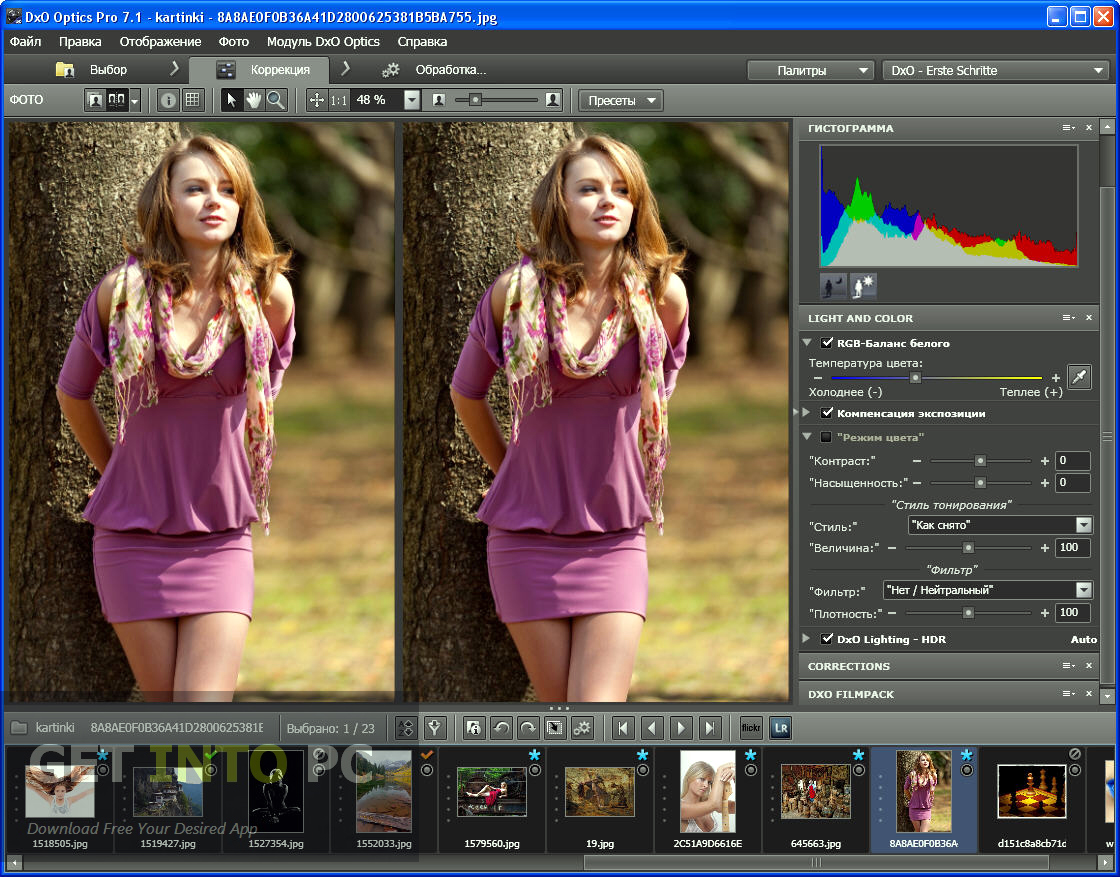
For example, my Nikon 18-200 has complex distortion at a focal length of about 18-24mm that ACR fails to correct. DxO does ALL this automatically on each image based on imported modules and info from the exif data.Īll this takes an immense amount of time in ACR and sometimes is not successful. As a consequence, every image can be unique and requires individual treatment in ACR. These faults vary depending on the f-stop, focal length (for zoom lenses), focussed distance of the shot, and the additional parameters resulting from the camera sensor and internal processing. Lens faults can be distortions (of various types), varying softness, and fringing of at least two types. I am working on the assumption that I won’t need to, based on what I have seen of the DxO interface/tools. You can use DxO for all future images the question is, will you (or I) still need/wish to apply further corrections in ACR. If this is the case, they cannot be passed through DxO, which can only be used for ‘virgin’ images. Thereafter, ACR or Photoshop can be used as needed.Īs I understand it, your library of images are all in DNG format, that is they have received post production treatment in ACR/PS. The point is to use DxO as the FIRST program for any image. Does it write these back to the original RAW file? Create a "side-car" file? Store them in it's own internal database? Discard them altogether?ĭxO will only import raw files (certainly NEF and CR2, poss others) and after processing will produce DNG, JPG and TIFF (just one or several simultaneously). So unless I've got this all around the wrong way, it looks like you almost have to take an "all or nothing" workflow approach, which unfortunately just isn't workable for me.Īdditionally, I'm curious as to where DxO saves the customisations selected for each image. Once the image is open in Photoshop it would be nice to then be able to apply automatic lens distortion corrections but, again, it seems that you can only deal with these on an initial FILE -> IMPORT level, and again, with no support for DNG. However, from what I've dug up, it appears that it's can't open DNG files, but it can produce them - and then these could be opened in photoshop, but only after passing through ACR, which seems to be the wrong way around to me (double-handling). What I'd like to be able to do is use DxO to open an existing DNG file and then pass the adjusted image through to Photoshop for further processing. The more I play with this the more I seem like I'm painting myself into a corner with it


They also have the FilmPack plugin/standalone (yet another purchase) for film rendering (color/grain).I rarely use it, but might come handy if I were you, give it a try and then see if you want to buy it.

PP covers the usual exposure, color, etc.corrections + lens distortion/vignetting There are some who do not like the color rendering (on some Nikon mostly). They did not supply many new modules last year, and hopefully with a new lab, they should be able to.now, as far as predicting what new module will come up, well, pretty hard to understand their choices sometimes.Īs far as PP goes, I am no expert, but folks on their forum are really happy with it: almost like a one click thing: import with preset (which would apply any PP you prerecorded), and mostly develop (batch process that is.).Might need some further tweak on some, but overall, can be pretty streamlined. Now of course, this is useful mainly if your body/lens combination is supported.

They come a long way since they first published version 5 in Dec 07.(really buggy and all). I do use it.actually that was my first ever PP program since I was so fedup with the lens distortion of my sigma.


 0 kommentar(er)
0 kommentar(er)
